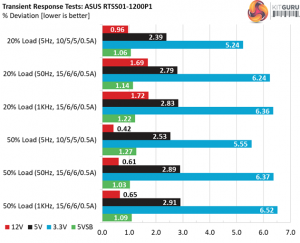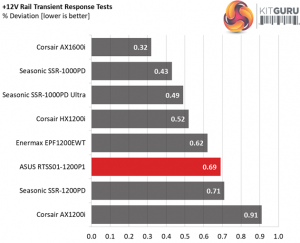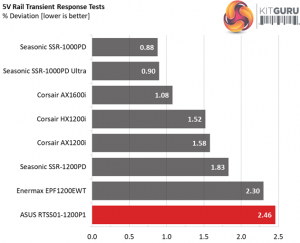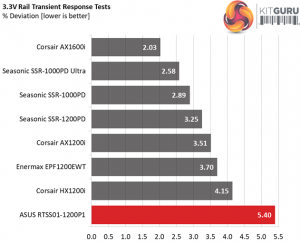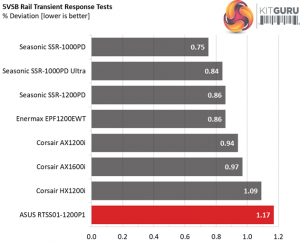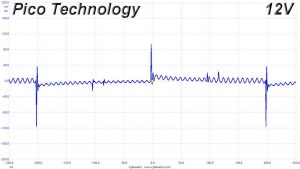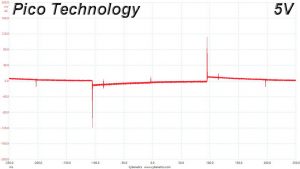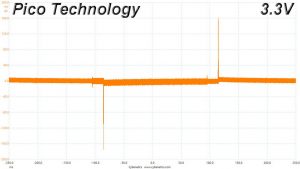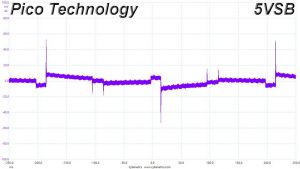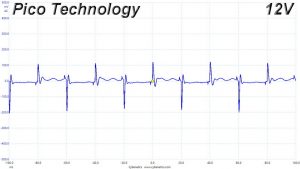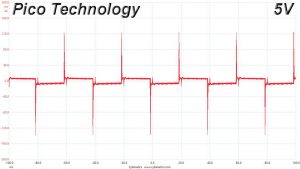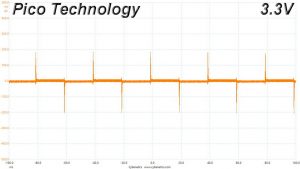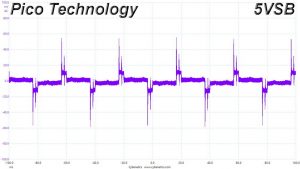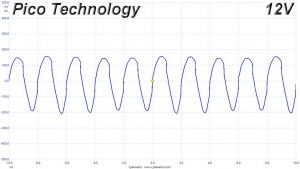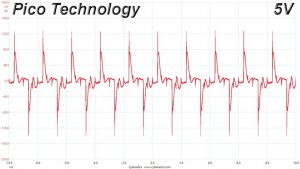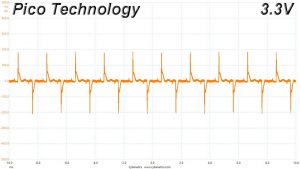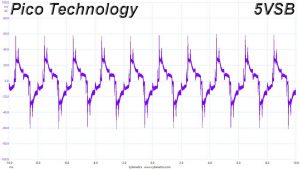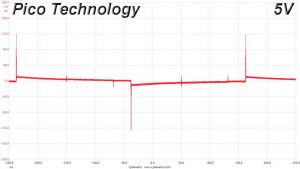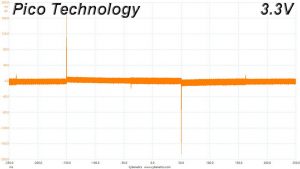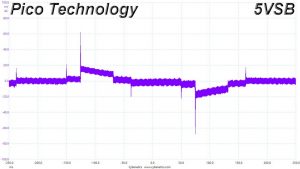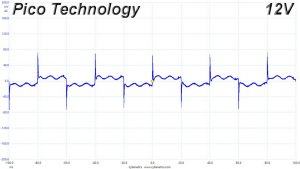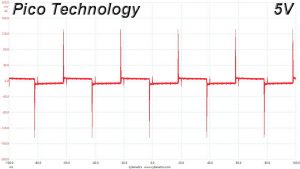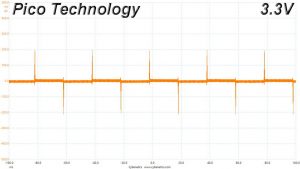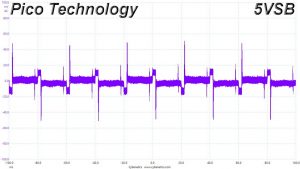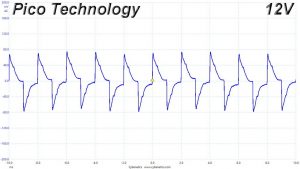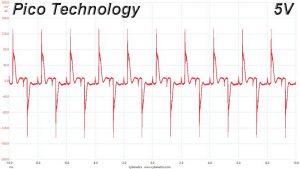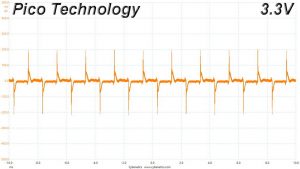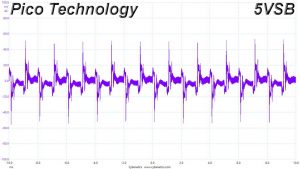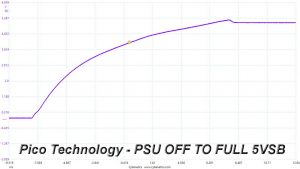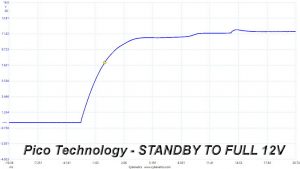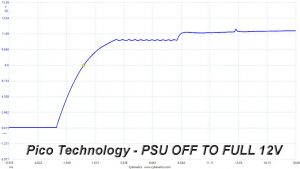Advanced Transient Response Tests
For details on our transient response testing, please click here.
These tests are crucial because they simulate the transient loads a PSU is likely to handle (such as booting a RAID array or an instant 100 percent load of CPU/GPUs). We call these “Advanced Transient Response Tests” and they are designed to be very tough to master, especially for a PSU with a capacity of less than 500W.
In all of the tests, we use an oscilloscope to measure the voltage drops caused by the transient load. The voltages should remain within the ATX specification's regulation limits.
We should note that the ATX spec requires for capacitive loading during the transient rests, but in our methodology we chose to apply the worst case scenario with no extra capacitance on the rails.
Advanced Transient Response at 20 Percent – 200ms
| Voltage | Before | After | Change | Pass/Fail |
|---|---|---|---|---|
| 12V | 12.223V | 12.106V | 0.96% | Pass |
| 5V | 4.977V | 4.858V | 2.39% | Pass |
| 3.3V | 3.318V | 3.144V | 5.24% | Pass |
| 5VSB | 5.078V | 5.024V | 1.06% | Pass |
Advanced Transient Response at 20 Percent – 20ms
| Voltage | Before | After | Change | Pass/Fail |
|---|---|---|---|---|
| 12V | 12.219V | 12.013V | 1.69% | Pass |
| 5V | 4.978V | 4.839V | 2.79% | Pass |
| 3.3V | 3.319V | 3.112V | 6.24% | Fail |
| 5VSB | 5.079V | 5.021V | 1.14% | Pass |
Advanced Transient Response at 20 Percent – 1ms
| Voltage | Before | After | Change | Pass/Fail |
|---|---|---|---|---|
| 12V | 12.218V | 12.008V | 1.72% | Pass |
| 5V | 4.978V | 4.837V | 2.83% | Pass |
| 3.3V | 3.319V | 3.108V | 6.36% | Fail |
| 5VSB | 5.079V | 5.017V | 1.22% | Pass |
Advanced Transient Response at 50 Percent – 200ms
| Voltage | Before | After | Change | Pass/Fail |
|---|---|---|---|---|
| 12V | 12.213V | 12.162V | 0.42% | Pass |
| 5V | 4.975V | 4.849V | 2.53% | Pass |
| 3.3V | 3.314V | 3.130V | 5.55% | Fail |
| 5VSB | 5.042V | 4.978V | 1.27% | Pass |
Advanced Transient Response at 50 Percent – 20ms
| Voltage | Before | After | Change | Pass/Fail |
|---|---|---|---|---|
| 12V | 12.211V | 12.137V | 0.61% | Pass |
| 5V | 4.976V | 4.832V | 2.89% | Pass |
| 3.3V | 3.314V | 3.103V | 6.37% | Fail |
| 5VSB | 5.042V | 4.990V | 1.03% | Pass |
Advanced Transient Response at 50 Percent – 1ms
| Voltage | Before | After | Change | Pass/Fail |
|---|---|---|---|---|
| 12V | 12.211V | 12.132V | 0.65% | Pass |
| 5V | 4.976V | 4.831V | 2.91% | Pass |
| 3.3V | 3.314V | 3.098V | 6.52% | Fail |
| 5VSB | 5.043V | 4.988V | 1.09% | Pass |
The +12V rail performs well however we would like to see better results from the minor rails, especially the 3.3V one.
Here are the oscilloscope screenshots we took during Advanced Transient Response Testing:
Transient Response At 20 Percent Load – 200ms
Transient Response At 20 Percent Load – 20ms
Transient Response At 20 Percent Load – 1ms
Transient Response At 50 Percent Load – 200ms
Transient Response At 50 Percent Load – 20ms
Transient Response At 50 Percent Load – 1ms
Turn-On Transient Tests
In the next set of tests, we measure the RTSS01-1200P1’s response in simpler transient load scenarios—during its power-on phase.
For our first measurement, we turn the power supply off, dial in the maximum current the 5VSB rail can handle, and switch the PSU back on.
In the second test, we dial the maximum load the +12V rail can handle and start the PSU while it is in standby mode. In the last test, while the PSU is completely switched off (we cut off the power or switch the PSU off through its power switch), we dial the maximum load the +12V rail can handle before restoring power. The ATX specification states that recorded spikes on all rails should not exceed 10 percent of their nominal values (+10 percent for 12V is 13.2V, and 5.5V for 5V).
The slopes rise smoothly however during the last test we notice a period with increased voltage oscillations and on top of that, it takes some time till the voltage settles down.
Be sure to check out our sponsors store EKWB here
 KitGuru KitGuru.net – Tech News | Hardware News | Hardware Reviews | IOS | Mobile | Gaming | Graphics Cards
KitGuru KitGuru.net – Tech News | Hardware News | Hardware Reviews | IOS | Mobile | Gaming | Graphics Cards


